What is an ILDA Award?
ILDA is the International Laser Display Association, a non-profit organization with the intention of increasing and expanding show laser lights & laser shows. Every year they are holding their annual ILDA Awards where they especially honor artistic and technical achievements in the show laser industry. There is also an award for career achievement.
What does KPPS stand for?
KPPS means Kilo Points Per Second and describes the speed of show laser scanning systems. That's how many thousand laser points per second can be displayed on walls and other suitable surfaces. The more KPPS the better the scanning device of a laser projector and the smoother the laser graphics & animations are displayed.
Why is the scan speed in your Laserworld Shop characterized as kpps@8°ILDA?
kpps@8°ILDA is the most common way to describe the scan speed and makes it that different show laser projectos are comparable. @8°ILDA is the scan speed at a scan angle of 8°. The wider the scan angle, the slower the scan speed gets. But scan speed doesn't work linear, so you can't simply calculate scan speeds with other scan angles.
With a laser show software, users can perform various tasks: control a show laser live from the computer, produce custom content for display via a show laser as well as arrange content using a timeline (laser show). This includes figures, texts, animations, 2D and 3D graphics and much more.
A professional laser show software (like Showeditor and Showcontroller) features a variety of connectivity options and functions for using laser content in an advanced multimedia environment. For flexible and efficient control, the software can be remotely controlled via external MIDI controllers and/or DMX hardware (e.g. lighting consoles).
LSO is the abbreviation for Laser Safety Officer
>>> see definition Laser Safety Officer >>>Each laser system must be assigned to a laser class by the manufacturer. The basic conditions can be found in the IEC 60825-1 standard.
For further details, please refer to the >>> FAQ Laser Classes <<<
What are Laser Graphics?
The term "Laser Graphics" refers to animated effects, graphics and texts, displayed by a graphics-capable show laser system. It's necessary to have fast scanning systems, bright colors and good beam specifications as well as a suitable laser show software for displaying proper laser graphics. With software and ILDA connection, own animations and logos can be first created and then projected by a show laser. There are also laser systems with pre-programmed animated effects, which are triggered via DMX.
There are several ways of how laser shows can be carried out. The way a laser show is perceived mainly depends on the spectator's perspective and the projection surface. Some laser show types require fog or haze to make the laser beams visible, others use surfaces to project on or through.
Overview:
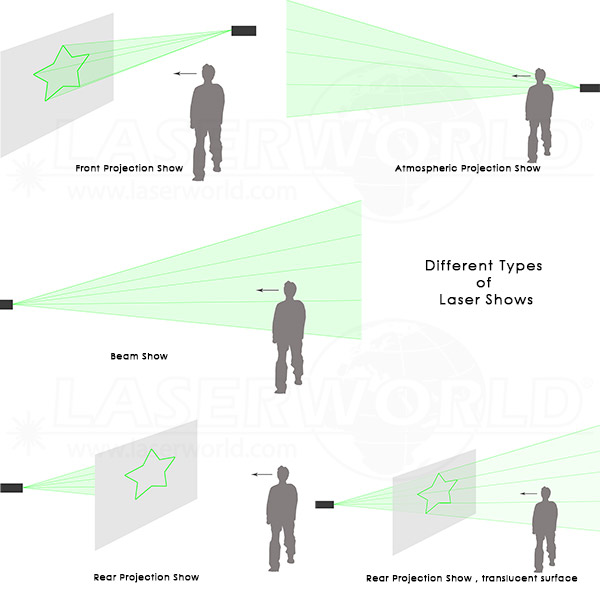
These are possible laser show types:
1. Front Projection Laser Show:
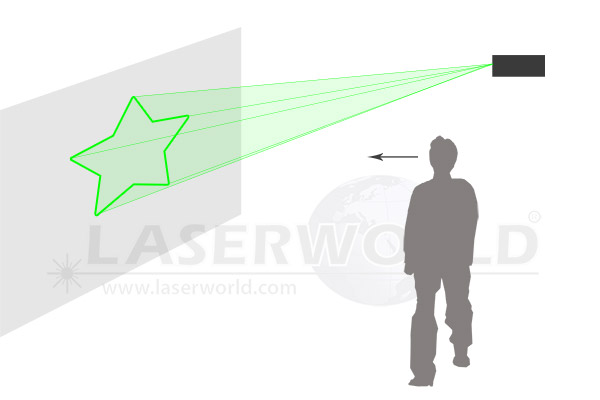
2. Rear Projection Laser Show
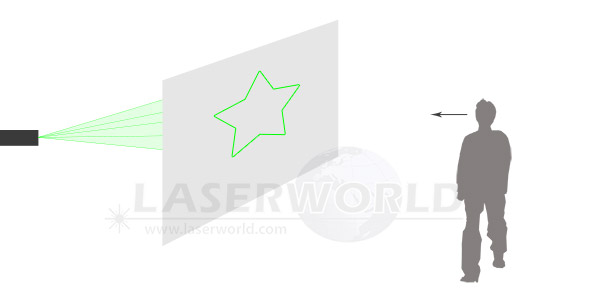
3. Beam Show:
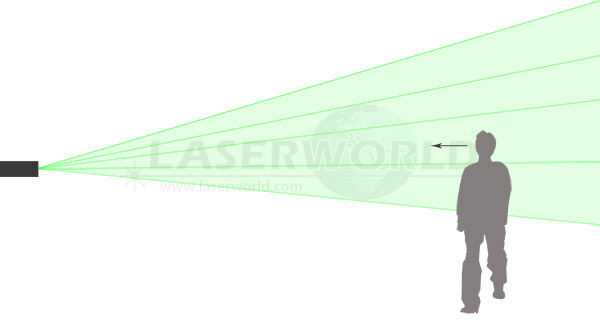
4. Atmospheric Projection Laser Show:
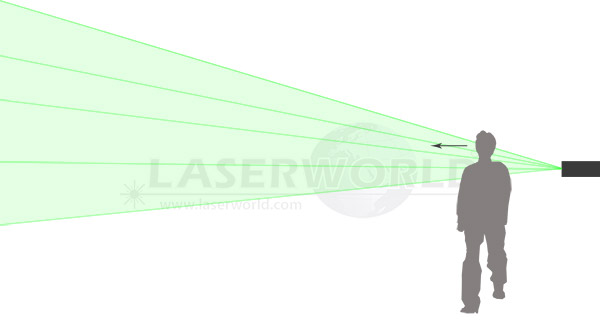
5. Rear Projection Show, translucent surface:
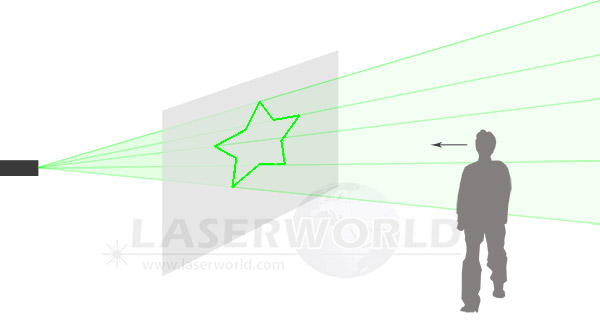
What is a Laser Screen?
Laser effects, graphics, texts, etc. must be displayed on different kinds of projection surfaces. Also screens may serve as projection surface. Laser screens may be distinguished into front projection screens and rear projection screens. Such screens are made of reflecting textiles (for front projections), semi-transluminescent material (for rear projections) or gauze / mesh (for both kind of projections). Front projections are displayed on the forefront of the screen, while rear projections are displayed on the screen's rear side. Besides screens one is able to use different other surfaces for laser projections, for example frosted glass, hydro shields, water screens as well as already existing objects and phenomenons, as buildings, walls, rocks or mountains.
Further information on Laser Screens
For the use of laser systems of the classes 3B and 4 it is required to designate a laser safety officer (in written form). The laser safety officer has to possess adequate technical qualification concerning laser systems, use and safety. This may be proved through vocational education or extensive know-how. Further it is recommended to visit a laser safety training. Laserworld offers such trainings in regular intervals.
Depending on the very country, a laser safety officer has different tasks and responsibilites to fulfill.
In Germany, for example, the tasks of a laser safety officer can be found in § 6 of the regulation BGV B2:
- consulting the entrepreneur in matters of laser safety
- professional selection of protective gear
- participation in the training of workers concerning laser eqipment, laser safety and protection measures
- participation in the testing of laser devices
- monitoring of compliance with safety and protection measures
- information of the entrepreneur about defects and faults of laser devices
- in-house notification and investigation of accidents by laser radiation
Laser beams are electromagnetic waves between 400 nm and 700 nm wavelength, created through stimulated emission. Light is a wave consisting of short wave packets, so called photones. Through stimulated emission an atom is encouraged to emit another photon by an already existing photon. This may be achieved via energy supply from outside ("pumping"): through light irradiation (DPSS lasers) or through electric energy (diode lasers). Furthermore one needs a resonator consisting of two mirrors between which the rays are reflected permanently and thereby getting amplified. One of these mirrors is slightly translucent. The emitting light is the laser beam. In a laser projector these emitted beams are filtered by means of a dichroic filter (that lets pass through only desired wavelengths) and then strike the mirrors of the laser scanner which deflect them. Thus one gets the visible laser beams escaping of the laser outlet of the projector.
Depending on the wavelength the beams have got different colors. Laser light is very concentrated and the beams may be visible over long distances. To get a narrow and sharp beam even over a longer distance (so called collimation) it is essential to have spatial coherence of the waves.
What is a Laser Animation?
A laser animation is an animated effect created by a show laser systems, for example a graphic, logo or text. For laser animations it is essential to have fast scanner systems, sharp beams, bright colors, good beam specifications and the appropriate software. Via ILDA it is possible to create own customized animations and logos for laser light shows. Some laser projectors come with several pre-programmed animated effects, which may be displayed through DMX. Single or multicolor animations can be a special highlight at a laser show.
More information on Laser Animation
What is a laser display?
Laser display is a term used to describe the application of laser light for entertainment purposes. Show laser display systems are ideal for big shows and events because they create and project focused laser beams and effects such as animated images and patterns on walls, ceilings, or other surfaces over a long distance. Combining laser light systems with music emotionalizes people through a multitude of audio-visual impacts where rhythmic beats are accompanied by different illumination effects that harmonize to the music and underline the mood of the music. By additionally using smoke, fog, video projections, and large water screens, huge and impressive multimedia laser shows can be created.
Different types of laser displays
There are many ways to seperate one laser display system from another:
Depending on the color sources, there are RGB laser projectors (red, green and blue), single color laser displays (mostly red, green or blue) and rainbow show lasers (adding cyan, yellow, lime and / or orange to an RGB setup) for even more color shades.
Depending on the operation modes, there are laser devices that can be controlled via ILDA, DMX, LAN, SD-Card, Browser Interface, in automatic or music mode.
Depending on the power of the laser sources, there are entry level laser systems for beginners as well as high power projectors for highest demands and everything in between.
Depending on the scan speed, the show laser is more or less able to display graphics.
See an example laser show with several laser displays
What are other terms for laser display?
The term "Laser Display" is synonymously used for "Show laser", "Laser light" or even "Laser show" (meaning the laser projector unit here).
Sometimes they are also called "Entertainment laser".
Not to be confused with laser video display
Sometimes the term "laser display" is also used for laser color television, laser tv or laser color video display, which is an alternative display technology to create images with laser projection technology.
Further usage of laser displays
Laser projection is not only used for festivals, concerts and in nightclubs but also can effectively be used for advertisement. Find out more about laser billboard avertising.
There are many ways to combine laser light with other elements to a huge multimedia laser show.
Using high power lasers is the best way to enlighten the night sky and use your show laser as a landmark laser.
See many other examples of how to use a laser display in the show laser applications example section.
Learn more about laser display systems








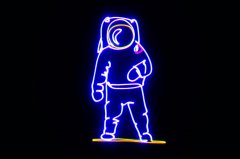
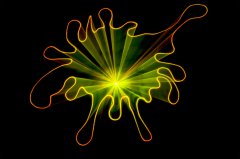
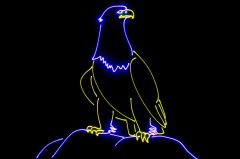
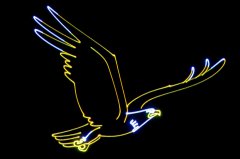
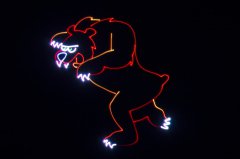

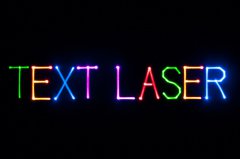
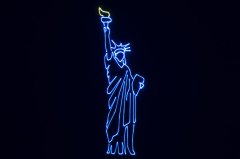
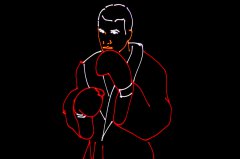
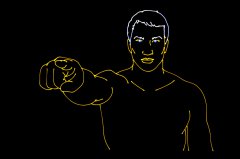
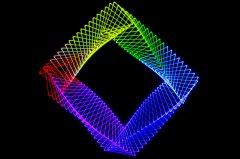
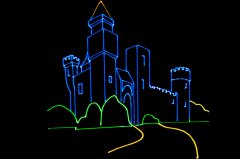
Distributed brands: